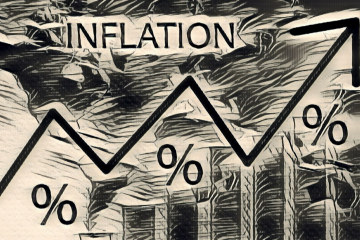Grade 7 Lesson 3: #Inflation
Inflation, in its most basic sense, is a rise in prices. For instance, a baseball bat that cost $20 two years ago may now cost $25, while a $6 banana split might be closer to $10. Inflation is related to our overall cost of living. As the costs of goods and services go up, the value of a specific currency (e.g., the dollar on the rupee) reduces every year. So, $1000 five years from now cannot buy the same amount of stuff it can buy today.
Inflation – good or bad?
While moderate inflation is completely normal and even signifies a strong economy, a high inflation rate—or hyperinflation—means that the value of our money has gone down. And that's not a good thing. On the other hand, both deflation (when prices fall) and stagflation (when an economy stops growing) can be detrimental to an economy.
Causes of Inflation:
Inflation is driven by a number of factors. Below are the 3 large buckets of factors that drive inflation
• Demand-side factors: This happens when the supply of products or services can't keep up with demand. For example, nine kids want a banana split, but there's only enough ice cream to make five. The ice cream shop may raise their prices because they have fewer banana splits to sell, but they know some of their customers are willing to pay more to satisfy their cravings.
• Cost-side factors: The cost of producing products and services goes up, and businesses must raise their prices to continue making money. In the ice cream shop scenario, cost-push inflation would happen if the cost of ingredients like milk and sugar increases, and the ice cream shop owner has to raise prices to continue making a profit.
• Built-In Inflation: This type of inflation happens when workers need higher wages to keep up with rising living costs. So if the ice cream shop's employees earn raises because their bills have increased, the shop's owner may raise ice cream prices to help cover those higher payroll costs.
Inflation rate:
The inflation rate is decided by the markets depending on economic factors. But usually, a country’s central bank or a monetary authority like the Federal Reserve in the US decides policies to manage the rate of inflation over time. The target rate of inflation is 2-3%. Currently (September 2022), the inflation rate in the US is very high 8%+ and the Federal Reserve is taking a series of steps to bring down the inflation to its target of 2-3%.

ayu ecosystem #kids #education #financialliteracy #finance